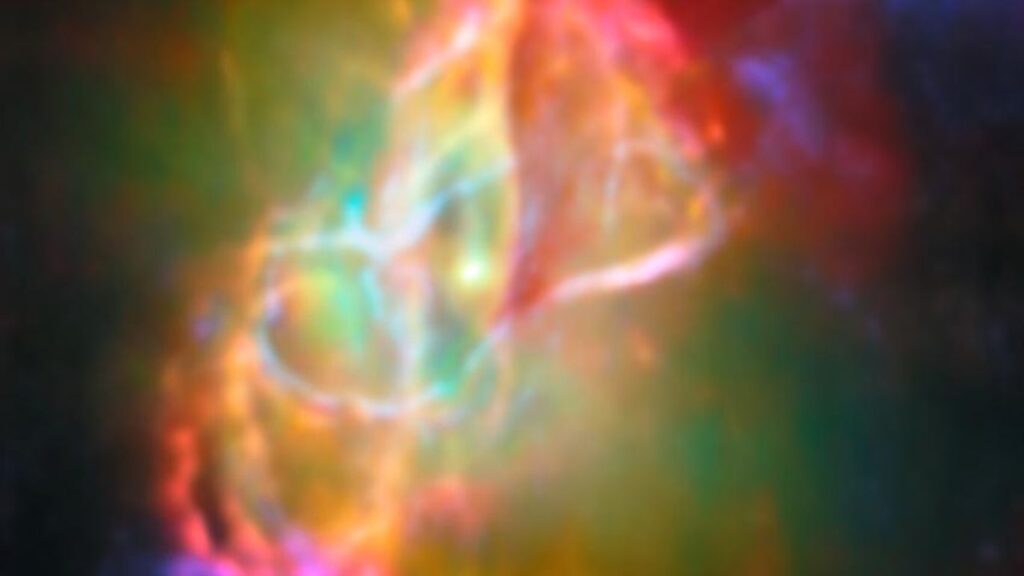
The James Webb Space Telescope (JWST) has made a groundbreaking discovery by observing the formation of cosmic dust particles that are crucial in the birth of planets. This remarkable finding was made within the Butterfly Nebula, also known as NGC 6302, located approximately 3,400 light-years away in the constellation of Scorpius. The observations reveal how the building blocks of planets emerge from the remnants of a dead star.
Understanding Planet Formation from Cosmic Dust
The Butterfly Nebula is a planetary nebula, formed from the outer layers of a star similar to our Sun that has exhausted its hydrogen fuel and ceased nuclear fusion. The dying star’s outer layers have been expelled into space, creating the nebula, while what remains is a white dwarf, a super-hot core radiating at 220,000 degrees Celsius (396,000 degrees Fahrenheit). The nebula exhibits a bi-polar structure, appearing as two lobes that resemble butterfly wings, with a central torus of dark dust resembling the body of the butterfly.
Using its Mid-Infrared Instrument (MIRI), the JWST captured an image of this central torus, enhanced by data from the ALMA radio telescope. While interstellar dust grains are typically up to 0.1 microns in size, MIRI detected crystalline silicate dust grains within the torus measuring one millionth of a meter. Although this is small, these grains are larger than average interstellar dust and similar to those found in regions where stars and planets form.
The findings suggest that these larger dust grains are essential for the planet-building process, as they can agglomerate in disks surrounding young stars, eventually forming pebbles that lead to larger planetary bodies. The new data indicates that the dust grains in the Butterfly Nebula have been growing over time, partly due to chemical reactions activated by the intense heat of the central white dwarf.
Chemical Insights from the Butterfly Nebula
Notably, the JWST also identified grains of quartz crystals and common carbon-based molecules known as polycyclic aromatic hydrocarbons (PAHs) within the nebula. PAHs are prevalent both on Earth, where they can be found in burnt toast and car exhaust, and in deep space, where they are thought to play a significant role in the chemistry of star and planet formation. Matsuura noted, “We were able to see both cool gemstones formed in calm, long-lasting zones and fiery grime created in violent, fast-moving parts of space, all within a single object.”
The PAHs are present in flattened ring structures, possibly formed by the interaction of gas around the white dwarf with particle bubbles released from the star. This interaction provides a glimpse into the complex dynamics of nebulae and their contributions to the cosmos.
Over the next tens of thousands of years, the luminescence of the Butterfly Nebula will gradually disperse into the vastness of space. The quartz grains, PAHs, and other elements produced from the star’s life cycle will drift through the cosmos, potentially contributing to the formation of new stellar systems. The findings from the JWST observations were published on August 27, 2023, in the journal Monthly Notices of the Royal Astronomical Society.
This discovery marks a significant advancement in our understanding of how fundamental materials come together to form planets, shedding light on the intricate processes that govern the life cycle of stars and their remnants.






